[Editor’s note: This article runs in a new section of The Tyee called ‘What Works: The Business of a Healthy Bioregion,’ where you’ll find profiles of people creating the low-carbon, sustainable economy we need from Alaska to California. Find out more about this project and its funders.]
When Rue MaCall walked down the aisle at her wedding in September, everything she wore was second-hand, borrowed or stitched from someone else’s discarded fabrics.
Her earrings were made from tassels she found in a donation bin. A friend lent her pearls purchased 50 years ago. She made her dress by hand, finding all the second-hand silk, thread and lace she needed from a single source, the Ragfinery, where she works as a program manager, in Bellingham, Washington.
The stand-alone beige building with a garage door entrance is located a couple of streets away from the town’s granola centre, and serves as a prime example of the creative power of upcycling — when people give an item a second life by adapting it to make something with new value. Upcycling is different from industrial recycling, sometimes called downcycling, which starts with destroying the item to reclaim materials that then go into new manufactured products.
MaCall’s wedding ensemble was a walking representation of the skills and sense of community she has been working to build since she arrived at the Ragfinery in the summer of 2021.
Creating her dress, said MaCall, “was such a combination of everybody here. I worked on it entirely in the classroom here, using our sewing machines and tools, with advice from volunteers.”
Since it opened in 2014, the Ragfinery has diverted more than one million pounds of textiles away from landfills, where they can pollute groundwater while taking decades to decompose. According to the National Institute of Standards and Technology, only 15 per cent of discarded clothing and textiles are collected for reuse in some form in the United States, with the rest ending up in landfills.
The Ragfinery is a non-profit run by nine employees, whose salaries are mostly paid through retail sales, with the help of a grant from the Washington State Department of Ecology. A handful of volunteers also come and go every day, helping with various tasks from offering artistic advice to sorting through textiles.
Every day loads of unwanted textiles are carted into the cheery, warehouse-like shop to be resold at a fraction of the price, as a thrift or consignment product, an upcycled item or individual material. Some pieces are also donated to local partners who have clients in need of clothing, and community members often bring in their own pieces to be repaired at cost.
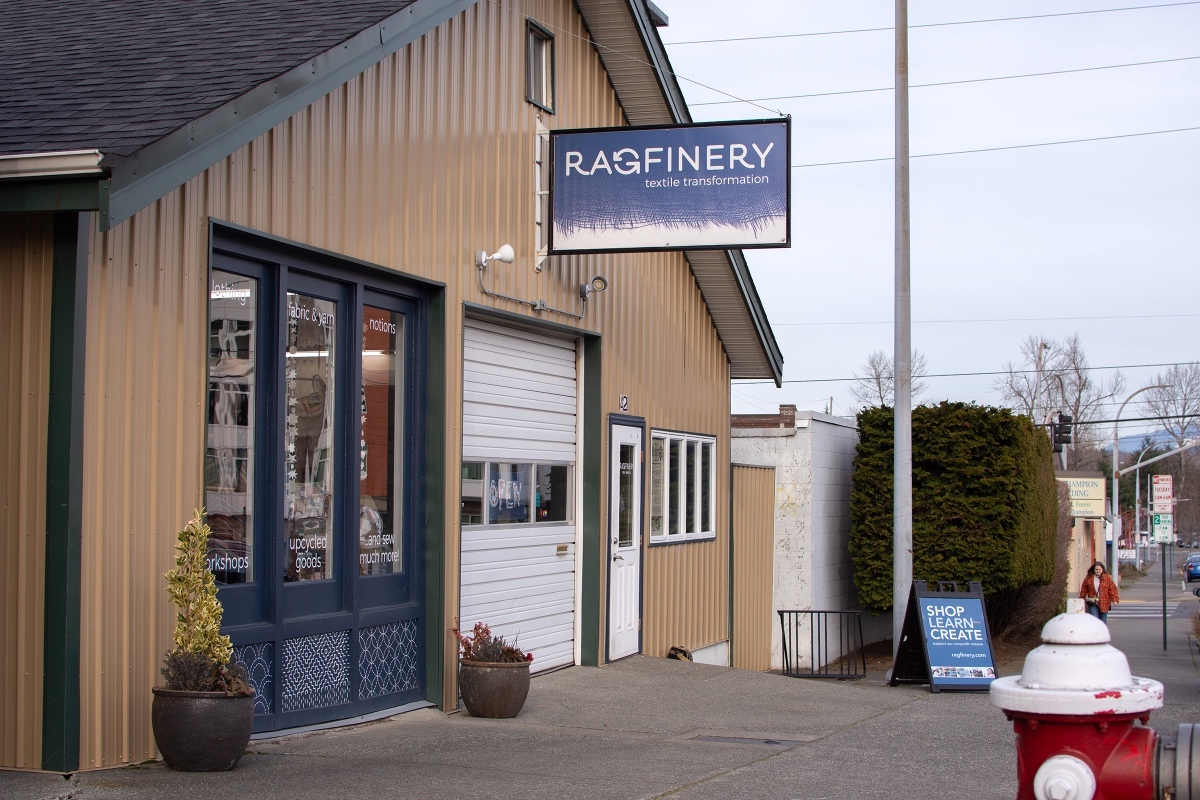
When Arora Timberlyn was eight years old, employees at her mother’s interior design company would give her old, unwanted swatches of fabric for her to repurpose.
“They would bring them to me and say, ‘What are you going to make with this?’ and I started by making small clothes for my stuffed animals, and then pillows, and then bags,” she said.
“It became this lifelong obsession with finding these weird little swatches of fabric that no one else is going to do anything with and turning them to something really cool.”
Now, Timberlyn works as the retail manager at the Ragfinery, where she oversees the sea of bins that litter the space for customers to hunt through. Aside from the small consignment and thrift part of the shop, the majority of products are sorted by material and priced by the pound.
Buckets of buttons, spools of thread and bins of scrap fabrics are sorted and displayed, creating a sort of treasure hunt for visitors. There’s even one bin labelled “unfinished projects” where crafters can pick up one person’s conceded effort and renew it in an ambition of their own.
The pricing system of charging per pound means some fabric pieces end up costing customers mere cents, and in an effort to maintain their accessibility, any large or extra-large clothes in bins are marked down slightly, to prevent people buying larger sizes from having to pay more.
Some garments that are in good condition but “not our style,” as MaCall explained it, are also donated to local partners, such as the Northwest Center in Seattle, which serves people with developmental disabilities.
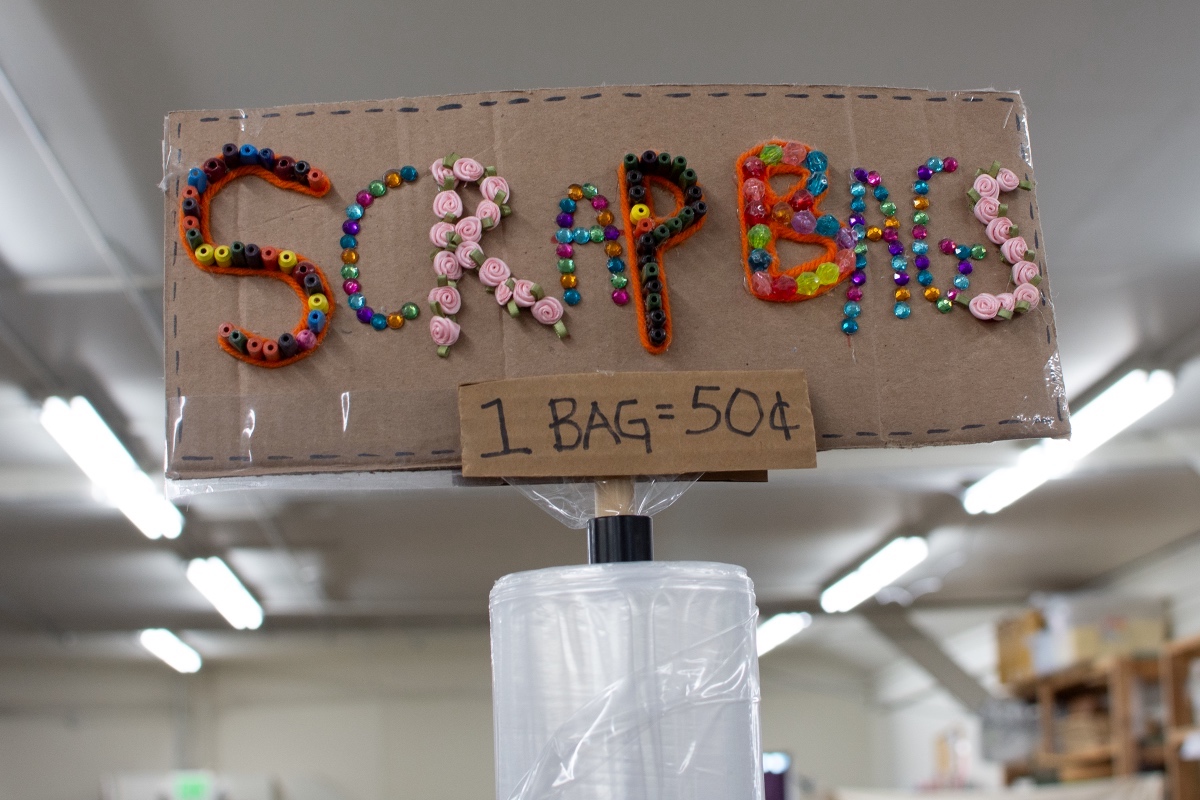
MaCall said the Ragfinery shouldn’t be defined as a recycler of clothing because “recycling textiles does not actually, really exist.”
Rachel McQueen, a textile science professor at the University of Alberta, said there’s a common misconception among consumers that textiles are easily recycled and therefore it doesn’t matter how many items they buy.
“That’s really misleading because the infrastructure and the ability for the industry to do that is really either small scale or not possible,” she said.
In 2022, less than one per cent of textiles saved from the landfill went through fibre-to-fibre recycling, meaning they were turned into new fibres used to create new products, according to the National Institute of Standards and Technology.
As the United States’ Environmental Protection Agency explains it, fabric recycling can be as complex as plastic recycling — hence why it’s done so little. It’s a lot cheaper for a textile to end up in a landfill than for it to go through the complex, low-demand process of separating and extracting the various ingredients of a blended fabric.
Instead of recycling, MaCall said, textiles are commonly upcycled into a new item with its own valuable character, or downcycled — broken down into basic elements that are still usable.
For example, MaCall explained, a pair of jeans with the crotch blown out could be upcycled into a handbag that is once again worth something. Or it could be downcycled by shredding it into insulation that’s less valuable than the original pair of jeans.
“We focus on upcycling. There are facilities that focus on downcycling, but the industry of downcycling is not transparent,” she said.
When upcycling isn’t an option for the Ragfinery, MaCall said, its downcycling methods include turning cotton T-shirts into rags for local bike shops or sending similarly small scraps of cotton fabric that they “absolutely cannot use” to places that allege to recycle them.
MaCall said the shop has greatly reduced the amount of textiles it has “gotten rid of in the past.” For the sake of transparency, she said, she’d like to continue whittling down that amount so as many textiles they deal with as possible remain traceable in where they end up.
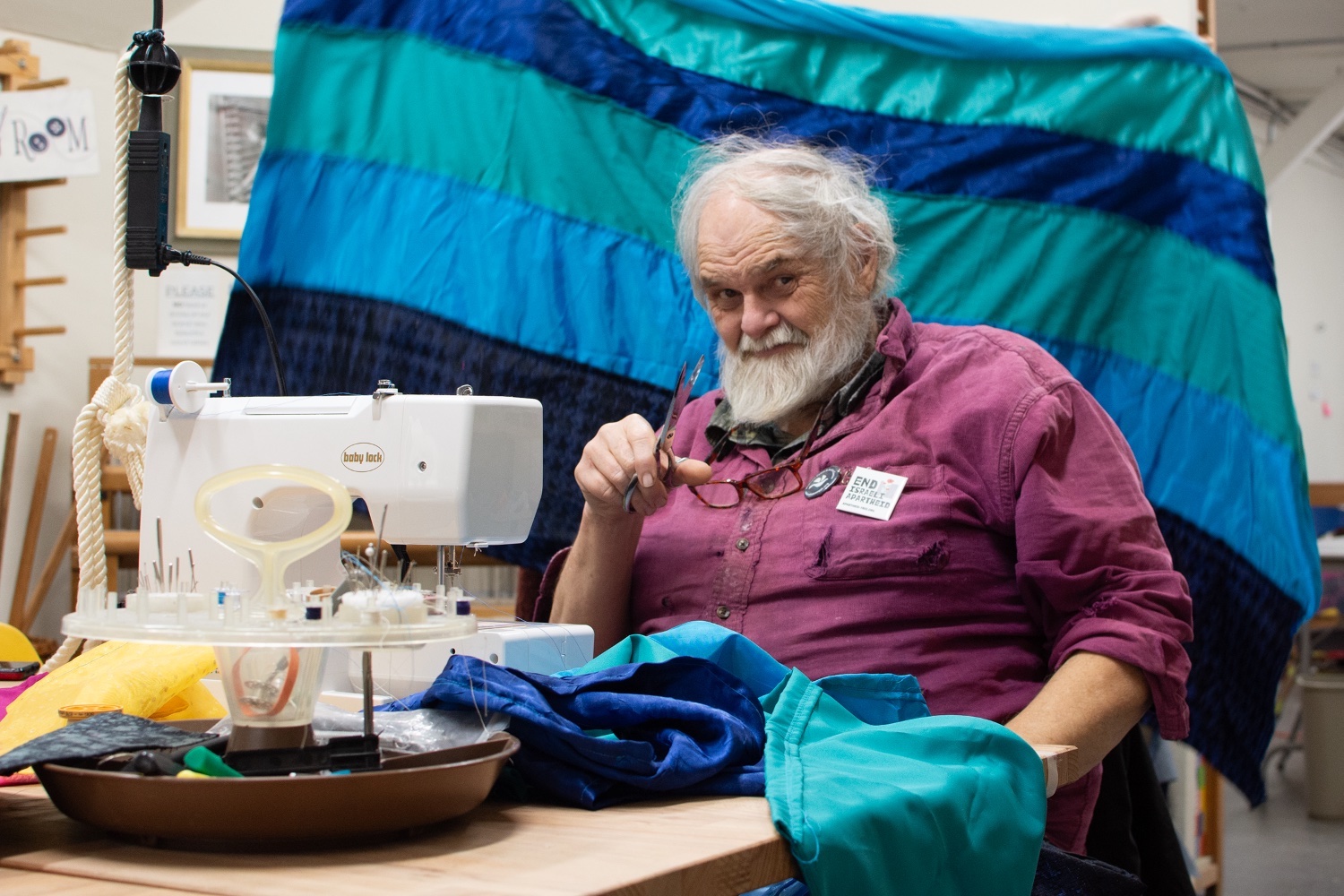
It’s not only the residents of Bellingham who are re-engaging with fibre arts and taking responsibility for their garments. Similar businesses are plentiful along the coast, such as Art from Scrap in Santa Barbara, California, the Lopez Solid Waste Free Store on Lopez Island, Washington, Looptworks in Portland, Oregon, and Fabcycle in Vancouver, B.C.
Globally, market research studies estimate the textile recycling market will grow by $5.3 billion between 2022 and 2030, with a compound annual growth rate of 3.5 per cent.
While stores like the Ragfinery serve local markets, larger companies, like Debrand in Surrey, B.C., have scaled up the concept to work across North America, creating end-of-life plans for surplus inventory or unwanted garments with companies like Lululemon. And according to the Bureau of International Recycling, awareness of the need for a circular textile economy is only growing.
To spread awareness of the viability of this circular approach to the industry, MaCall has made education a large part of her mission at the Ragfinery.
Over the past two decades, fast-fashion brands in the United States have swollen to produce twice the amount of clothing they did before the year 2000. Between 2000 and 2018, the share of municipal solid waste that textiles comprise grew by 80 per cent, according to EPA data. This compares with the only 20 per cent growth of the overall waste stream in the same time period.
To teach customers about the growing volume and toxicity within fast fashion, MaCall shares educational content about the industry and fosters excitement around the practice of repair.
“We do not blame consumers for what's going on. It can be really confusing as a consumer, so we try to offer education in that way,” she said.
Every Tuesday, between noon and 2 p.m., the store’s classroom opens up for community members to come in and access its surplus of tools, free of charge.
The classroom’s walls are littered with scissors, rulers, sewing machines and endless spools of thread arranged in a mesmerizing, hanging pattern on the wall. A ruckus of laughter explodes out of the room every once in a while between volunteers working on their own projects and community members enjoying the opportunity to busy their fingers and minds.
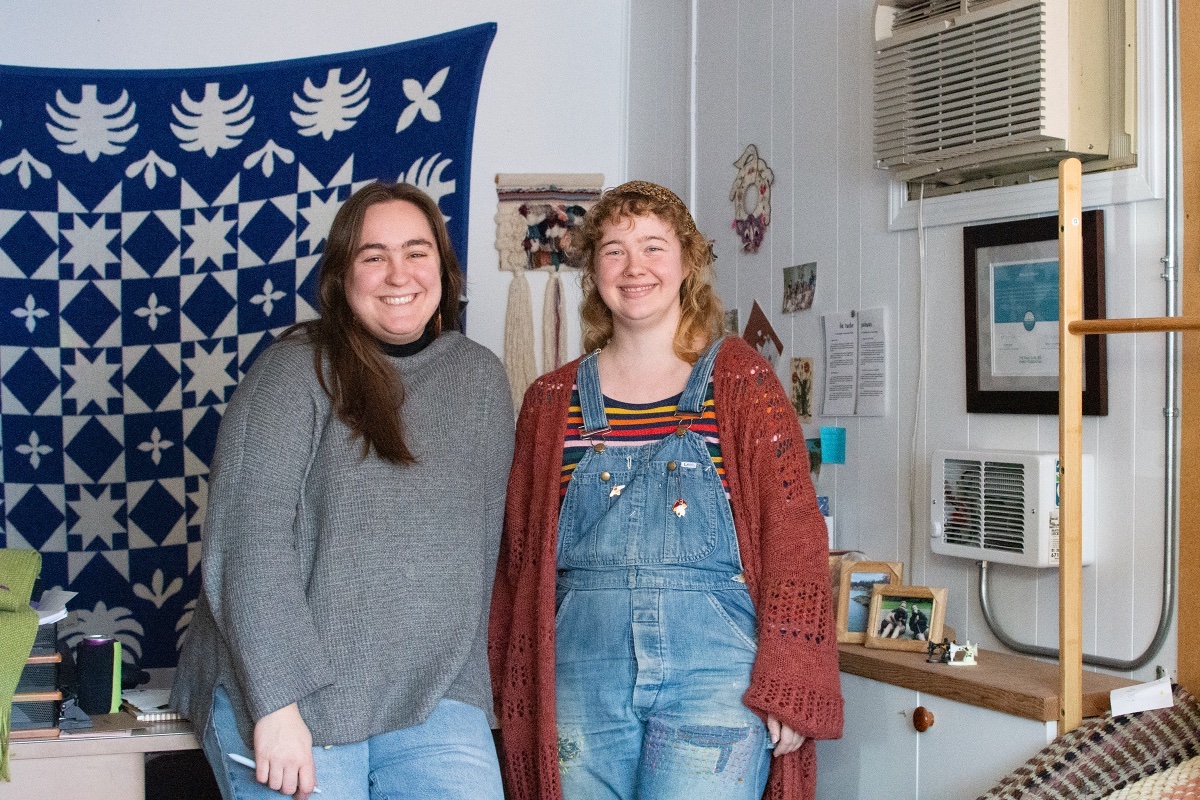
Harold Niven is one of the community members who often shows up to take advantage of the space and sew his colourful banners, which he said can be hung on walls as decoration.
“The Ragfinery is an amazing place,” he said from behind a sewing machine. “People who are into fibre have great addictions.”
“It’s scary!” piped up Francie Gass, another volunteer sitting across the table from Niven who was working on a quilt.
The Creative Crafters Club also meets in the space every Wednesday, and it can be rented out for any textile-art-based class or workshop seeking a space. MaCall said it’s through this space that the Ragfinery really has the greatest impact.
“Every time somebody either takes a sewing class here and learns a new skill that can be used to mend a single pair of pants, or a bunch of pants throughout their lifetime, it instils a different relationship to clothing and consumerism,” she said.
To take this mending movement to a national scale, McQueen said she’d like to see more governments enact extended producer responsibility laws — meaning the producer of a product has to take responsibility for managing its end of life.
In the United States and Canada, there’s currently no such law in place at the federal level. Instead, an assortment of actions are being taken at the state, provincial or territorial level.
In Massachusetts, legislation was introduced in 2022 to ban textiles from landfills and force their collection by one of the state’s burgeoning network of non-profit and for-profit textile recovery organizations. And in February, Senate Bill 707, also known as the Responsible Textile Recovery Act, was introduced in California to hold textile producers responsible for the disposal of their products. However, in July, its first hearing was put on hold after stakeholders requested more time to research its proposed impact.
In B.C., several producer responsibility plans are in place for products like electronics or toys, but none for textiles.
While national action is yet to be taken in Canada and the United States, the expanding grid of community-based businesses, like the Ragfinery, is making a positive impact in an industry that’s rife with environmental threats, such as greenhouse gas emissions, exorbitant water consumption, toxic chemicals and microplastics.
The United Nations estimates global greenhouse gas emissions from textiles production amounts to at least 1.2 billion tonnes annually, which is more than those of all international flights and maritime shipping combined. Some experts predict that number will rise by more than 60 per cent by 2030. Additionally, the use of persistent and toxic chemicals known as PFAS is abundant in the making of clothing, carpets and “waterproof” materials.
Experts state the fashion industry is the second-largest consumer of the world’s water supply, and its use is expected to increase by more than 50 per cent by 2030.
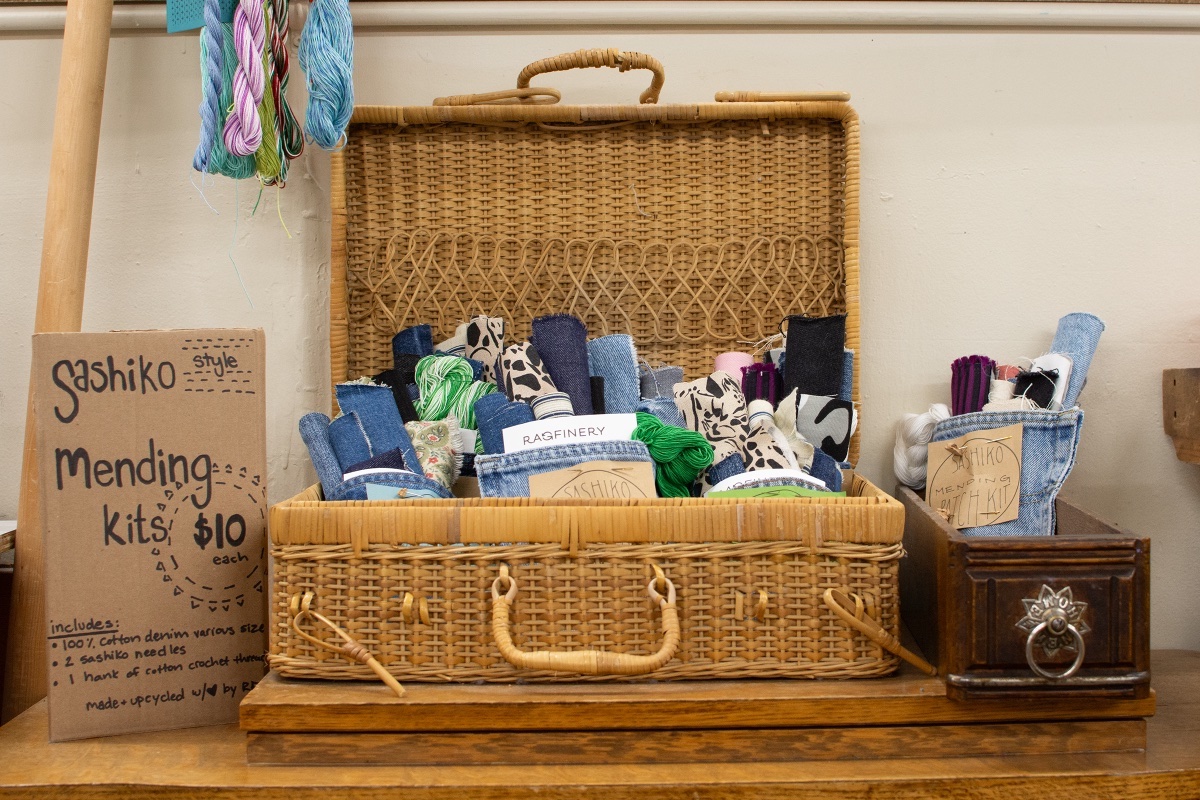
If the mission of slowing down one of the world’s most resource-intensive industries can seem daunting, the mood inside the Ragfinery on a chilly Tuesday is light, buoyed by personal creativity.
While giving a tour of the space, Timberlyn excitedly pointed out the sashiko stitching — a type of embroidery or visible mending — colourfully peeking through in patches on her denim overalls.
“I have a stronger garment than I ever would have before because I've taken the time and I'm going to make this last. People can do that with socks, sweaters, bags and beddings,” she said.
“It's amazing what people can make. And it's also art.”
To encourage others to do the same, Timberlyn and MaCall created small sashiko mending kits that they sell in the store. Sandwiched between two jean pockets that have been sewn together, each kit contains everything needed to make a repair.
“These finishing touches, they make me feel so at home in my clothes in a way that I never would have before,” Timberlyn said.
“We're helping the planet, we’re helping our people, and we're giving artists access to things that they maybe couldn't have gotten before because the price points of entering into all these hobbies is so high.” ![]()
Read more: Local Economy, Environment




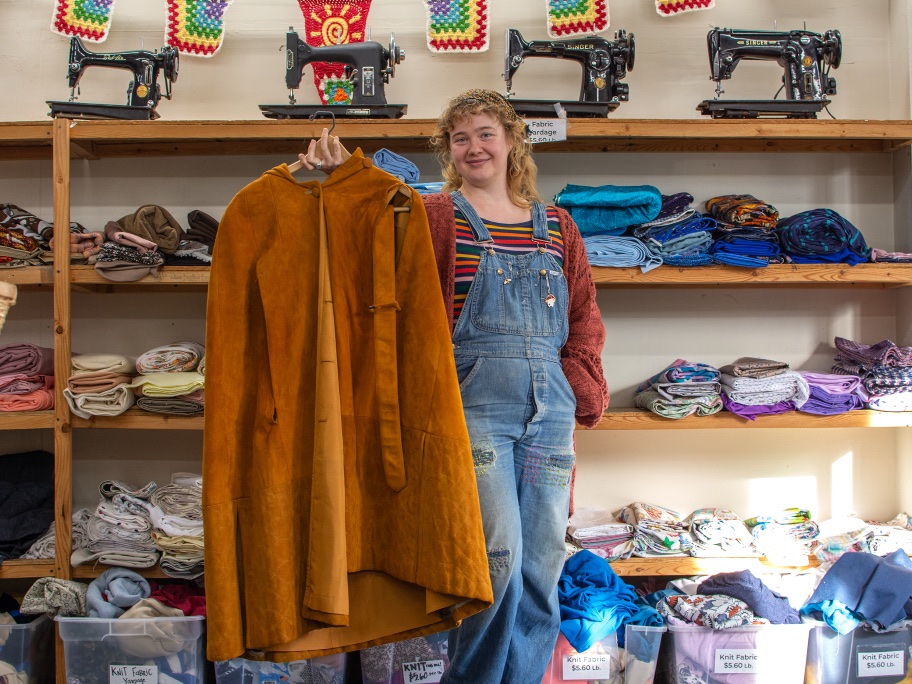


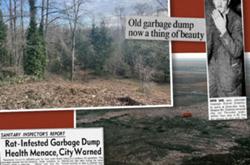









Tyee Commenting Guidelines
Comments that violate guidelines risk being deleted, and violations may result in a temporary or permanent user ban. Maintain the spirit of good conversation to stay in the discussion and be patient with moderators. Comments are reviewed regularly but not in real time.
Do:
Do not: